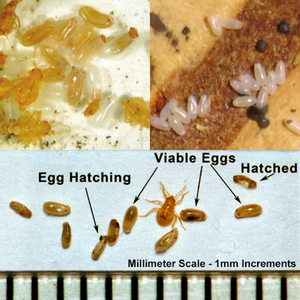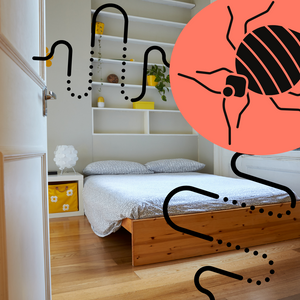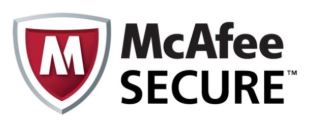Control Bed Bugs Using Integrated Pest Management (IPM)

It is known that controlling bed bugs takes a lot of patience and time. These pests are known to reproduce in a short period of time and their eggs have high-resistance to most pest control methods, both non-chemical and chemical. Below are useful data that you can use in understanding effective techniques in dealing with bed bugs.
What is IPM?
IPM or Integrated Pest Management is an environmental-sensitive and effective approach to manage pest infestations. IPM programs utilize information on life cycles of various pests as well as their interaction with the environment and humans.
The information they have along with available methods for controlling pests are used for managing pest damage using the most economical way. This is executed while taking into consideration the least possible hazard to the property, people, as well as the environment.
IPM makes use of all suitable pest management methods that include the cautious usage of pesticides. Though there are times when bed bugs can be controlled by using only non-chemical methods, it is often considered a strenuous task, less likely effective and more resource-intensive.
It is possible to attain bed bug control when using an IPM approach along with the diligent participation of affected residents. For multi-family housing, diligent participation from the building management also plays an important role in achieving complete bed bug control.
Benefits of Implementing Building-Wide IPM
Bed bugs infestation is often a problem in multi-housing or multi-family residential buildings. There are many who are not aware that these bugs can travel from one room to the next room, to the next and so on. This can be a continuous problem that unit owners may unknowingly experience in the most unexpected way.

Since most people are shy to talk about it, no one really knows if their neighbours are already dealing with an infestation. As one resident tries to treat the infestation, bed bugs would normally hide upstairs, downstairs, or even in the neighbouring units. This may result in the infestation spreading throughout the building.
This is the main reason why education plays an important role in IPM. It does not only focus on the use of various pest control methods but also in the proper implementation of techniques and the cooperation of everyone in the building.
Comparing the benefits of IPM Programs to Conventional Pest Control Method
A recent study from an entomologist at Rutgers University, Changlu Wang, Ph.D. proves the benefits of building-wide IPM after the application of IPM techniques. The study was done to a low-income, high-rise rental apartment building.
Along with his team of researchers, Wang evaluated the effect of using a contractor-led bed bug IMP program in a high-rise apartment building for a year. The results of the evaluation are compared to the use of conventional monthly pest control service performed at another apartment building.
Though the contractor only followed the IPM protocol partially, the results still showed a decrease in bed bug infestation from 9% at the start of the research to 3% after a year. This result shows a 63% reduction in the infestation in the building. The building has no monitors and all apartments had cursory treatment services from a pest control contractor.
On the other hand, the second building that received a monthly conventional pest control service had an increase in its bed bug infestation. From an infestation rate of 6% at the start of the study, the infestation increased to 12% after a year. The result shows a 117% increase as compared to that of using the IPM program.
This study only shows that IPM works efficiently for building-wide control of bed bugs as compared to conventional pest control methods. It confirms further the benefits that building-wide IPM on reducing pest infestation and challenges when implementing an IPM program in low-income residences.
What’s in a Complete IPM Program?
A complete IPM program for controlling bed bugs may include a couple of chemical and non-chemical methods. The following sections describe some of these methods:
Chemical Methods
Chemical methods or the use of pesticides are among the popular and go-to treatments of most people when dealing and bed bugs. An IPM plan includes a multi-part process and pesticides should only have one part of it.
Sprays

- There are hundreds of sprays and powders registered by Health Canada against bed bugs and most of it can be used by consumers without professional help. Blaze Bed Bug Killer is among the popular options you may find and works effectively in killing bed bugs on contact. You can use the product when dealing with bed bugs or when just trying to be cautious against the presence of bed bugs.
- Sprays must be used responsibly. Just because you have a bed bug spray ready at home, doesn’t mean that you can spray it on any surface. A common mistake of many is that they tend to pesticides too much. This only results in spreading the problem.
- When using sprays like Bed Bug Blaster or Sleep Tight Bed Bug Killer, you simply have to spray it on specific parts or certain problem areas. Sprays can be used for reaching narrow and secluded areas.
- If you are planning to treat your bed, you can spray around the bed frame but not the mattress or box spring. For the mattress or box spring, getting a bed bug mattress or box spring cover will get the job done in protecting you from these pests.
- Aside from using a mattress cover, you can use a residual spray like Blaze Pro Residual Bed Bug Killer or the Sleep Tight Residual Barrier & Premise Protector. This will act as a repellent against bed bugs and keep you protected for days.
Dust and Powders

- Another option under the chemical methods is using pest powder or dust like the Diatomaceous Earth, Chemfree Insectigone or the DX13-Diatomaceous Earth. When using dust or powders, you have to use it at the perimeter of the affected room.
- Apply powder on all four walls of the room, along the baseboards, and around plug outlets. Make sure that all cracks and crevices are covered by the powder or dust.
- The powder will act as a barrier against these bugs and prevent them from getting inside the room or even escaping from the room. This will trap them inside and prevent them from travelling and infesting another room or unit.
Whether you are using sprays or powders or when trying a different product make sure you always wear the label prior to reapplying.
Consulting an expert to inspect your resident will also help you determine what it is that you really need and recommend pesticides to treat an infestation.
Non-Chemical Methods
There are various non-chemical methods that you can try like the following:
Heat Treatments

- Put infested clothing and bedding in the dryer at the hottest possible setting for about 30 minutes. Aside from drying, washing at the hottest temperature can also add up to killing the bed bugs present on the items. To avoid the bugs from spreading before washing, you can put all items in water-soluble laundry bags that will keep the bugs inside till you throw it all in the washing machine.
- Heat-treat infested articles like luggage, furniture, and other items that can’t fit in your washing machine or dryer. Heat-treating devices such as Zappbug Heater, Zappbug Oven 2, Packtite Closet or even the Zappbug Room can all accommodate larger items and kill bed bugs. These are portable units that you can also bring when travelling and keeping yourself safe from bed bugs.
- Another option for heat-treating is the use of bed bug steamers. With this option, you get the benefit of killing bed bugs and eggs and sanitizing infested surfaces at once. The Pronto 100C Steam Cleaner is a portable option that you can conveniently use in heat-treating and sanitizing baseboards and other surfaces. The steam can also penetrate through layers of furniture that reach bed bugs hiding under layers of foam or thick fabric.
When heat-treating infested articles, make sure that the temperature reaches about 49°C and have the articles treated for an hour and a half. This will guarantee to kill both bedbugs and their eggs.
Bed Bug Box Spring, Mattress, and Pillow Encasements

- The simple use of bed bug box spring cover, bed bug pillow covers, and bed bug mattress encasements help trap and detect infestations. Getting a complete bed bug protection kit is an ultimate bedbug-proof solution that you can use for your bed and keep these pests away.
- Encasements also act as barriers from these pests as these prevent bed bugs from hiding in the mattress, box spring, or pillows from escaping. These can also prevent these pests from entering and potentially hiding in the seams of the mattress, box spring, and pillows.
Bed Bug Interceptors

- After getting any treatments, you can use monitoring devices such as interceptors to make sure that there are no bed bugs left in the room. You can use the ClimbUp Interceptor Original and put it under the legs of furniture or bedposts. ClimbUp XL Bed Bug Trap is a highly recommended option for larger or wider furniture or bedpost legs.
- Another solution to preventing bed bugs from reaching you or from letting these pests from climbing up your bed or furniture is by using bed bug interceptors. These are made with rough exteriors to let the bed bugs get in. However, the interior is smooth enough to prevent them from climbing out which traps them in the well.
- As the bugs are trapped, it helps you detect and monitor the presence of bed bugs and the current level of infestation.
Treating bed bugs does not only require the use of a single product. The most effective way of dealing with an infestation is by using a combination of various treatments. This is the reason why utilizing an IPM program is essential.
With an IPM program, proper methods and pest control techniques are done to get a positive outcome. You can talk to an expert to have your residence inspected and learn the methods that you must do to control an infestation.






